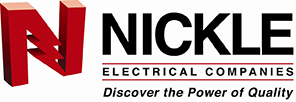 Blueprint drawings are the native language of the construction industry. It’s how workers communicate – studying sketches, evaluating design, and picturing the final product. To some, the lines, angles, and symbols make perfect sense. To others, it may look like gibberish. Whether you’re looking to excel in the construction industry, or simply expand your knowledge, reading blueprints correctly is essential.
Blueprint drawings are the native language of the construction industry. It’s how workers communicate – studying sketches, evaluating design, and picturing the final product. To some, the lines, angles, and symbols make perfect sense. To others, it may look like gibberish. Whether you’re looking to excel in the construction industry, or simply expand your knowledge, reading blueprints correctly is essential.
The first concept is that there are three types of prints – plan, elevation, and section. A plan shows the project as if you’re looking down on it, a horizontal display. Elevation is looking sideways at the project, a vertical display. Section is a cut-through of the project or a view that will show how it’s going to be built. When you first look at a blueprint it’s important to first identify what type it is.
Basic knowledge also calls for an understanding of the scale. An engineering scale is used when dimensions are in feet and when measurements have a scale ratio that’s a multiple of 10. An architectural scale uses feet and inches, with a certain length set equal to one foot. The scale can range from 1/8 inch to three inches that’s equal to one foot.
One of the most important aspects of a blueprint is reading the specifications (or specs). They could include the project schedule, particular requirements for clean-up, or required material. Acquiring all project documents and specs will ensure the project is completed as planned. The consequences of not reading the specs can be devastating.
There are two major phases of creating drawings – design and construction. In the design phase, the architect and engineer envision the project and roughly sketch the concept. They collaborate to decide on methods, materials, layout, and system designs. The prepared architectural and engineering sketches will act as a handbook for the preparation of construction drawings.
Remember, it’s important to gather all paperwork, drawings, contracts, and specs to fully grasp what the project will look like and how it will be carried out. Here and here are two great outside resources with more detailed information on blueprint reading and sketching. You can also search for classes at local schools or organizations such as Associated Builders and Contractors.




